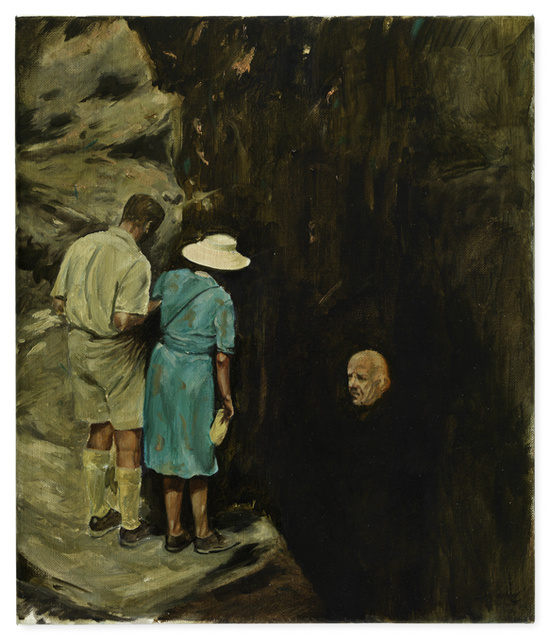Silent One, 2010 Oil on linen 35.7 x 30.5 cm / 14 x 12 in
© Christopher Orr, Hauser & Wirth Zürich,IBID Projects,London
One old beer factory with a lion mark in Löwenbrau-Area, which is the base of Zurich’s modern art, is currently going through a large-scale 2-year development.
Although many prominent galleries around the world used co-existed in this area, such as Migros Museum für Gegenwartskunst, Eva Presenhuber, Hauser & Wirth, Peter Kilchmann and Bob van Orsouw, all these galleries were moved altogether last year. For the time being, Hubertus Exhibitions in Kreis 9 area will be the location for activities.
If it were in Tokyo, it would be like going to the bay area. It was getting dark and I was heading towards the direction where you may see fewer people. As I was not farmilier with that area, I took a wrong tram, but somehow I managed to get there, with a little help from a friend over the cell phone.
It was the opening party of Migros Museum that night. Since the party had started earlier, some people were already coming out. At the entrance of the building, people who looked like art students got together, enjoying smoking in the cold air.
Up on the staircase, I saw Migros Museum für Gegenwartskunst on the right, and 2 galleries on the left.
Bob van Orsouw was introducing the latest works of Nobuyoshi Araki. As might be expected, they had a good collection. Next to that was Hauser & Wirth, which really demonstrated the luxury of the top-notch art world.
While it has been the custom that you could look at other galleries on the opening night of one gallery, with this building, the floor gave the impression of a united floor when each gallery left its door open, which I found very interesting.
I saw an enigmatic picture.
From the entrance, some peculiar light was inviting me, like saying, “Come over here.”
The author was Scottish Christopher Orr. A picture which I felt like I have met somewhere long time ago. However, it was a false illusion, and once you stepped into this odd world of this contemporary artist, by tracking back the genealogy of surreal or fantasy paintings, I soon realized that the origin of his images had to go back another century.
Orr was a German scenary painter, and it has been said that he was very much affected by British Joseph Mallord William Turner or by the romantic expression by another German scenary painter, Caspar David Friedrich, who shared the same epoch.
Whether it was ruins or rainstorm, it was a scene of something crumbling. Appreciating its peculiar uneasy beauty of romanticism, and traveling back and forth between fiction and constructivism, this artist worked his way by erasing the borderline of reality and fantasy.
While it suggested as well as symbolized something, the abstractiveness of Orr was just like a trip back and forth between the energy of fetal movement like magma burning deep inside the earth and illusion, which still continued to the story of the present and the future.
The texture created by painting in so many layers and figures. Or scraping the paint off by knife in order to have a mysterious shape suddenly appear at the bottom of the canvas.
Most of these 13 new works exhibited here were rather small, F0 or F3. Those small things were inducing words here and there out of the tranquil wall, and the meanings that the pictures represented were crossing from every angle of the world.
At 9:00 pm in the venue, sceneries of fiction that were neither uneasy another world or this world, were placed side by side, and the lyricism of light and darkness was set free.
http://www.hauserwirth.com/

Leave your comment